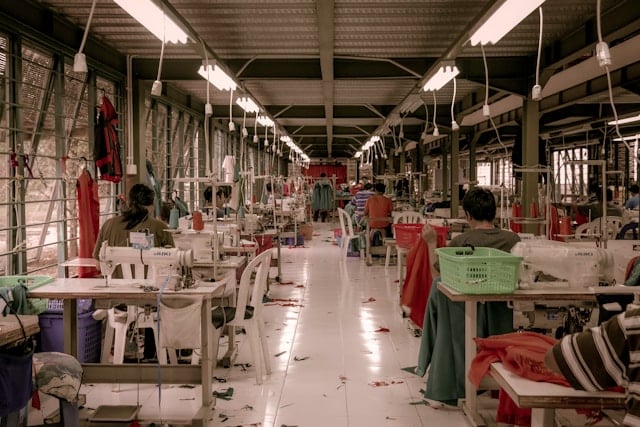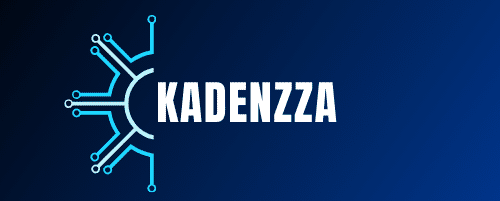What’s the Role of Nanotechnology in Advancing UK’s Textile Industry?

In today’s dynamic and globalised world, innovation is key to keeping your business competitive. One area where this holds particularly true is the textile industry. As you all know, the UK has a rich history in textiles and is at the forefront of textile innovation worldwide. One such innovation that is dramatically changing the landscape of this market is nanotechnology. This is a branch of technology that works with particles at the nanoscale – a scale so small it’s hard to comprehend, yet so powerful the changes it can bring about are truly game-changing.
In this article, we will guide you through the promising advancements of nanotechnology in the textile industry, from water-resistant clothing to smart fabrics, and how this technology is fueling the growth of this global market.
Have you seen this : What Are the Best Strategies for Introducing Renewable Energy in UK Rural Areas?
Nanotechnology and Its Application in Textiles
Nanotechnology is a powerful tool that can transform the properties of materials at a microscopic level. When applied to textiles, it can result in improved quality, enhanced performance, and increased lifespan of fabrics.
One of the most popular applications of nanotechnology in the textile industry is the creation of water and stain-resistant materials. Nanoparticles, when applied to fabrics like cotton, can create a barrier that repels liquids, making the fabric resistant to water and stains. This kind of application is extremely useful for outdoor clothing, children’s clothing, and home textiles.
In the same genre : How to Cultivate a Community Orchard in UK Urban Neighbourhoods?
Another application of nanotechnology in textiles is in the creation of smart fabrics. These are fabrics that can react to changes in their environment, such as changes in temperature or light, and adjust their properties accordingly. They can provide increased comfort and adaptability for wearers, and are especially relevant in sportswear and protective clothing industries.
The Size of the Global Nanotechnology Market in Textiles
The application of nanotechnology in the textile industry is not just a matter of scientific interest, but also a significant commercial opportunity. The global nanotechnology market in textiles is experiencing impressive growth, driven by increasing demand for innovative and high-performance materials.
According to a recent market forecast, the global nanotechnology market in textiles was valued at USD 4.92 billion in 2020. This figure is projected to reach USD 13.63 billion by 2027, growing at a compound annual growth rate (CAGR) of 16.7% during the forecast period. This significant growth is fueled by various factors including increasing consumer demand for durable and high-performing clothing, growing adoption of smart textiles, and advances in nanomaterials technology.
The Role of Nanotechnology in UK’s Textile Industry
As one of the leading countries in textile production, the UK is also among the frontrunners in implementing nanotechnology in textiles. The application of nanotechnology has the potential to revolutionise the UK’s textile industry by improving the quality, functionality, and longevity of homegrown products.
On the industrial level, nanotechnology can be used to enhance the properties of textiles, making them stronger, more durable, and resistant to water, stains, and even bacteria. This can significantly reduce costs and waste in the textile production process, making the industry more sustainable and competitive.
On the consumer level, the implementation of nanotechnology can bring about more innovative and higher-quality products. From water-resistant outdoor clothing to smart sportswear that can regulate body temperature, nanotechnology can provide UK consumers with exciting new options that meet their demands for performance and functionality.
Market Segmentation and Future Forecast
The market for nanotechnology in textiles is segmented based on type of nanomaterial, application, and region. The type of nanomaterials used in textiles includes nanoparticles, nanocomposites, nanocoatings, and nanofibres. Each type has different properties and applications, contributing to the diversity and versatility of nanotechnology in textiles.
In terms of application, nanotechnology is used in various segments of the textile industry, including clothing, home textiles, and technical textiles. Each segment has different demands and requirements, offering multiple opportunities for the application of nanotechnology.
Looking towards the future, the nanotechnology market in textiles is forecast to continue its robust growth. As advancements in nanomaterials continue, and as consumer demand for high-performance textiles remains strong, the role of nanotechnology in advancing the UK’s textile industry is set to become even more critical. With its potential to transform the textile industry, nanotechnology is undoubtedly an area to watch closely.
Nanotechnology in Global Textile Production
The global scale of nanotechnology application in the textile industry is vast and continues to expand. From America’s nanotechnology initiatives to China’s nanotechnology experiments, different regions possess unique market segmentation and strategies for the incorporation of nanotechnology in textile production.
In North America, for instance, the focus is mainly on the development of smart textiles. Through the use of nanotechnology, American designers and manufacturers are producing advanced apparel that offers consumers comfort, durability and adaptability, making these products highly sought after in the global market.
In contrast, the textile market in China concentrates on the cost-effective production of large-scale textiles. Through nanotechnology, China is enhancing the quality and durability of its textiles, thereby reducing waste and production costs, which in turn increases their market share.
The Europe nanotechnology scene, particularly the UK, focuses on enhancing the overall quality of textiles. This includes developing water-resistant clothing, stain-resistant fabrics, and temperature-regulating sportswear. The application of nanotechnology in these areas significantly improves the functionality and longevity of textiles.
In other regions like Japan, nanotechnology is adopted to create innovative and unique textile designs, contributing to the fashion industry’s evolution. This application is leading to the creation of textiles with unique visual effects, tactile sensations, and other novel characteristics.
It’s important to note that Google Scholar contains a wealth of academic research on the subject, providing further details on the use of nanotechnology in the textile industry around the world.
Conclusion: The Future of the UK’s Textile Industry and Nanotechnology
As we look to the future, the role of nanotechnology in the UK’s textile industry is set to become increasingly important. Market forecasts indicate a burgeoning trend, with the global nanotechnology market in textiles projected to experience robust growth during the forecast period.
This growth will be driven by the continued advancement in nanomaterials technology, as well as the ongoing consumer demand for high-performing textiles. The UK, with its rich history and reputation for innovation in the textile industry, is in a prime position to lead in this emerging field.
We can expect to see a greater variety of smart textiles entering the market, offering consumers more choice and improved functionality. From clothes that can regulate body temperature to fabrics that resist stains and water, these advancements will expand the textile market and provide consumers with higher quality products.
The continued growth of the nanotechnology textile market, as well as the increasing market share of countries like the UK, America, and China, will pave the way for more technological innovations in textile production. Indeed, the role of nanotechnology in advancing the UK’s textile industry is set to be a game-changer.
In conclusion, as nanotechnology continues to evolve and improve, we can expect it to play an even more critical role in the textile industry worldwide, particularly in the UK. For stakeholders in the industry, keeping abreast of these developments will be key to ensuring competitive advantage in this fast-evolving market.
